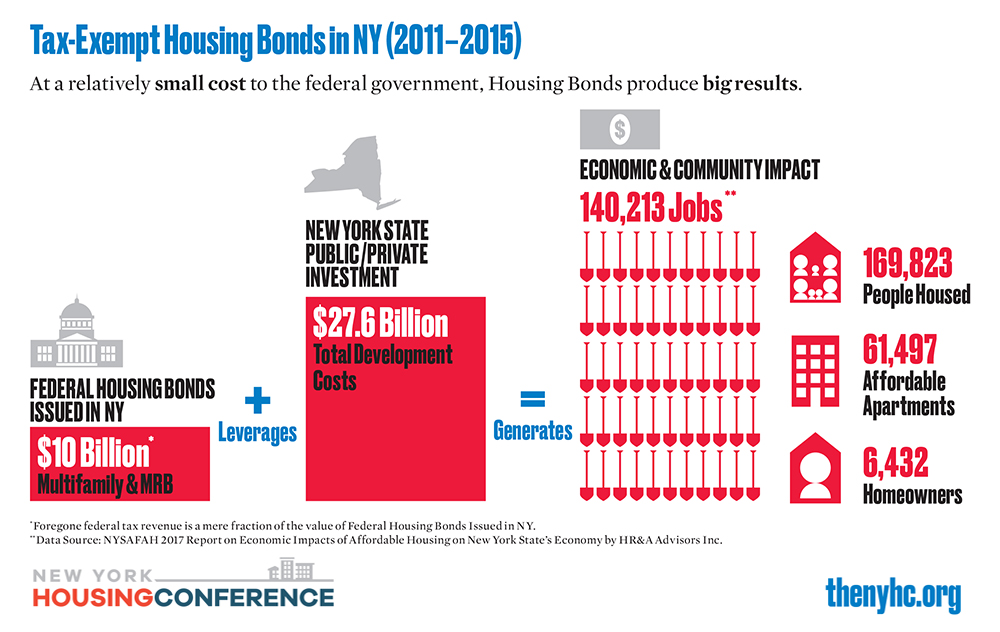According to press reports, city agencies are being required to cut half of the positions vacant as of October 31, 2022. The current staffing crisis has greatly impacted services, especially for housing-related agencies. NYHC led a sign-on letter opposing the staffing cuts and calling on the administration to increase housing capital funding to increase housing production and meet rising construction costs and interest rates.
The agencies that work on housing had significant vacancies at the end of October. The Department of Housing Preservation and Development was short almost 500 positions, 18% of their budgeted headcount; the Department of Buildings is short 449 positions (23 percent), the Department of City Planning is short 79 positions (22 percent), the Department of Homeless Services is short 234 positions (11 percent), and the Human Resources Administration is short 2,614 positions (20 percent).
These staffing shortages are delaying necessary services. At HPD, the staffing shortage meant the agency produced just 16,000 units in FY 2022, 43% fewer than the 28,000 units produced in 2021. The staffing shortage at City Planning has meant longer application process for ULURP projects, delaying much-needed new housing.
At HRA, the staffing shortage means much slower processing of one-shot assistance, City FHEPS packets, and other public assistance benefits. This leaves people at risk of homelessness, rent arrears piling up, and staying in shelter longer than necessary.
Cutting half of the vacant positions permanently will mean making the service reductions permanent.
We are also concerned about insufficient capital resources in the near-term for HPD. Construction costs increased 11.5 percent in 2021 and are projected to increase 14.1 percent by the end of 2022 and interest rates are the highest they’ve been in 20 years, greatly increasing the costs of construction. While HPD underspent their capital budget last year, these rising costs will put added pressure on HPD’s capital budget to produce the same amount of housing.
Unfortunately, the administration moved the $600 million of unspent housing capital from last year’s capital funding budget was moved far into out-years and the $5 billion investment over 10 years for housing was mostly (not counting the NYCHA funding) added in the second half of the ten-year plan. Given increasing costs and the extremely dire housing crisis, unspent capital and the new capital allocations should be added to the current and subsequent fiscal year budgets.
We were joined by 111 organizations in opposing massive staffing cuts at housing-related agencies and calling for increased housing capital funding in the current and near-term fiscal years. You can see the text of the sign-on letter below or see the final letter here.
Mayor Eric Adams
City Hall
New York, NY 10007
Dear Mayor Adams,
We are writing to express our concern about insufficient capital resources for housing and the impact the staffing cuts requested of all city agencies will have on agencies working on affordable housing. New York City continues to experience a major housing crisis, with nearly 1 million New Yorkers rent burdened and nearly 70,000 New Yorkers experiencing homelessness. Your ability to address this crisis by producing affordable housing and achieving your moonshot goal of adding 500,000 new units of housing in ten years can only succeed if housing-related agencies are sufficiently staffed.
According to press reports, agencies are being required to cut half of the positions vacant as of October 31, 2022. While many agencies could likely find ways to work more efficiently, a staffing cut of this magnitude is taking a hatchet to the budget in a situation that calls for a scalpel.
The agencies that work on housing had significant vacancies at the end of October. The Department of Housing Preservation and Development was short almost 500 positions, 18 percent of their budgeted headcount; the Department of Buildings is short 449 positions (23 percent), the Department of City Planning is short 79 positions (22 percent), the Department of Homeless Services is short 234 positions (11 percent), and the Human Resources Administration is short 2,614 positions (20 percent).
Make no mistake; these staffing shortages are delaying necessary services. At HPD, the staffing shortage meant the agency produced just 16,000 units of affordable housing in FY 2022, 43% fewer than the 28,000 units produced in 2021 and they are projecting producing just 18,000 units in FY 2023, still far below previous housing production. The staffing shortage at City Planning has meant a longer certification process for ULURP projects, delaying much-needed new housing.
At HRA, the staffing shortage means much slower processing of one-shot assistance, City FHEPS packets, and other public assistance benefits. This leaves people at risk of homelessness, rent arrears piling up, and staying in shelters longer than necessary.
Cutting half of these vacant positions permanently will mean making the service reductions permanent.
Instead, the city should work to fully staff the agencies and reverse the staffing shortage. OMB can and should work with the agencies to find efficiencies and process improvements that can save staff resources. Your “Get Stuff Built,” report based on the work of your BLAST (Building and Land Use Approval Streamlining Task Force) initiative will streamline processes and is a step in the right direction. However it will take time to fully implement and therefore will not save significant staff resources in the near term. The city should not eliminate staffing positions before improvements are fully implemented.
We are also concerned about insufficient capital resources in the near term for HPD. As I am sure you know, construction costs increased 11.5 percent in 2021 and are projected to increase 14.1 percent by the end of 2022 and interest rates are the highest they’ve been in 20 years, greatly increasing the costs of construction. While HPD underspent their capital budget last year, these rising costs will put added pressure on HPD’s capital budget to produce the same amount of housing.
Unfortunately, your administration moved the $600 million of unspent housing capital from last year’s budget far into out-years and the $5 billion investment over 10 years for housing was mostly (not counting the NYCHA funding) added in the second half of the ten-year plan. Given increasing costs and the extremely dire housing crisis, unspent capital and the new capital allocations should be added to the current and subsequent fiscal year budgets.
We understand the worrying fiscal picture and the need for sound fiscal management. However, cuts must not impact services and areas addressing our greatest crisis should be spared. Now is the time to show that we are putting the resources necessary to address the crisis.
Sincerely,
AARP NY
ANHD
The Arker Companies
B’nai Jeshurun
Benchmark Title Agency, LLC
Breaking Ground
The Bridge
Broadway Community, Inc.
Buddhist Association of the United States
CAMBA, Inc.
Care For the Homeless
Chhaya CDC
The Church of Gethsemane (PCUSA)
Center for NYC Neighborhoods, Inc.
CHPC
Church of the Ascension
Citizens’ Committee for Children of New York
Coalition for the Homeless
COFCCA
Community League of the Heights, Inc
The Community Service Society of New York (CSS)
Concern Housing
Cooper Square Community Land Trust
Corporate Campaign, Inc.
Corporation for Supportive Housing (CSH)
The Correctional Association of New York
Covenant House NY
Curtis + Ginsberg Architects LLP
Dattner Architects
Douglaston Development
Emmaus House Harlem
Enterprise Community Partners, Inc.
Fair Housing Justice Center
Fifth Avenue Committee
Forsyth Street Advisors
FPWA
Goddard Riverside
Goldstein Hall PLC
Goshow Architects
Gotham Organization
Habitat for Humanity NYC and Westchester County
HELP Development Corp.
Henry Street Settlement
Holyrood Church/Iglesia Danta Cruz
Homeless Services United
Housing Rights Initiative
Housing Works, Inc.
The Hudson Companies Inc
Hunger Free Amnerica
IMPACCT Brooklyn
Interfaith Assembly on Homelessness and Housing
The Interfaith Center of New York
Joint Ownership Entity NYC
Lantern Community Services
Latino Pastoral Action Center, Inc.
Lifflander and Reich LLP
LISC NY
LiveOn NY
Low Income Investment Fund
MacQuesten Construction Management LLC
MBD Community Housing Corp
Mega Contracting
Merchants Capital
Ruth Messinger, former Manhattan Brough President and City Councilmember
Midtown South Community Council
Monadnock Development
Mt. Moriah AME Church
Nazareth Housing
Neighborhood Coalition for Shelter, Inc.
Neighborhood Restore HDFC
Neighbors Helping Neighbors
New Destiny Housing
New York Housing Conference
New York State Council of Churches
NYCEEC
NYSAFAH
Office of Peace, Justice, and Ecological Integrity, Sisters of Charity of Saint Elizabeth
Open Hearts Initiative
Presbytery of New York City
Project Hospitality
Project Renewal Inc
Providence House
Real Estate Board of New York (REBNY)
Regional Plan Association
RiseBoro Community Partnership
Rockabill Development, LLC
Rutgers Presbyterian Church
Sadhana: Coalition of Progressive Hindus
Samaritan Daytop Village
SCO Family Services
Selfhelp Realty Group
Settlement Housing Fund
Sisters of Charity Housing Development Corporation
St. Nicks Alliance
Shams DaBaron aka “Da Homeless Hero”
South Bronx Overall Economic Development Corp. (SoBro)
Supportive Housing Network of New York
Tenants Political Action Committee
Type A Projects
UHAB
UJA-Federation of NY
University Neighborhood Housing Program
Uptown Progressive Action
Urban Architectural Initiatives RA P.C.
Urban Pathways
Urban Resource Institute
Vocational Instruction Project Community Services, Inc.
Volunteers of America-GNY
WBP Development
Wells Fargo
West Side Democrats
West Side Federation for Senior and Supportive Housing (WSFSSH)
Win (Women in Need, Inc)
Workers Defense League









